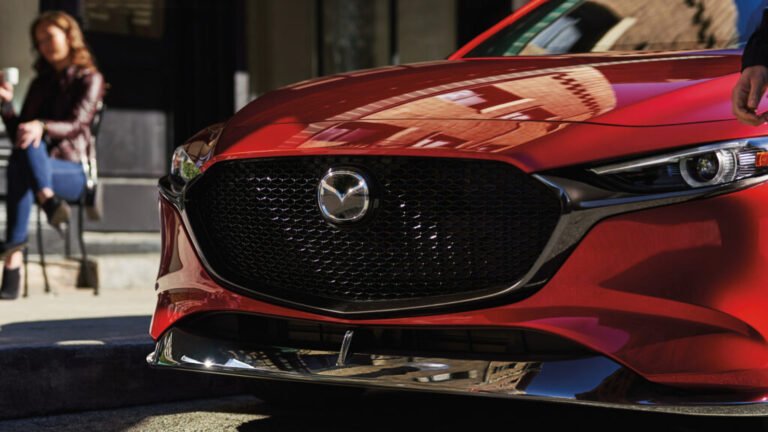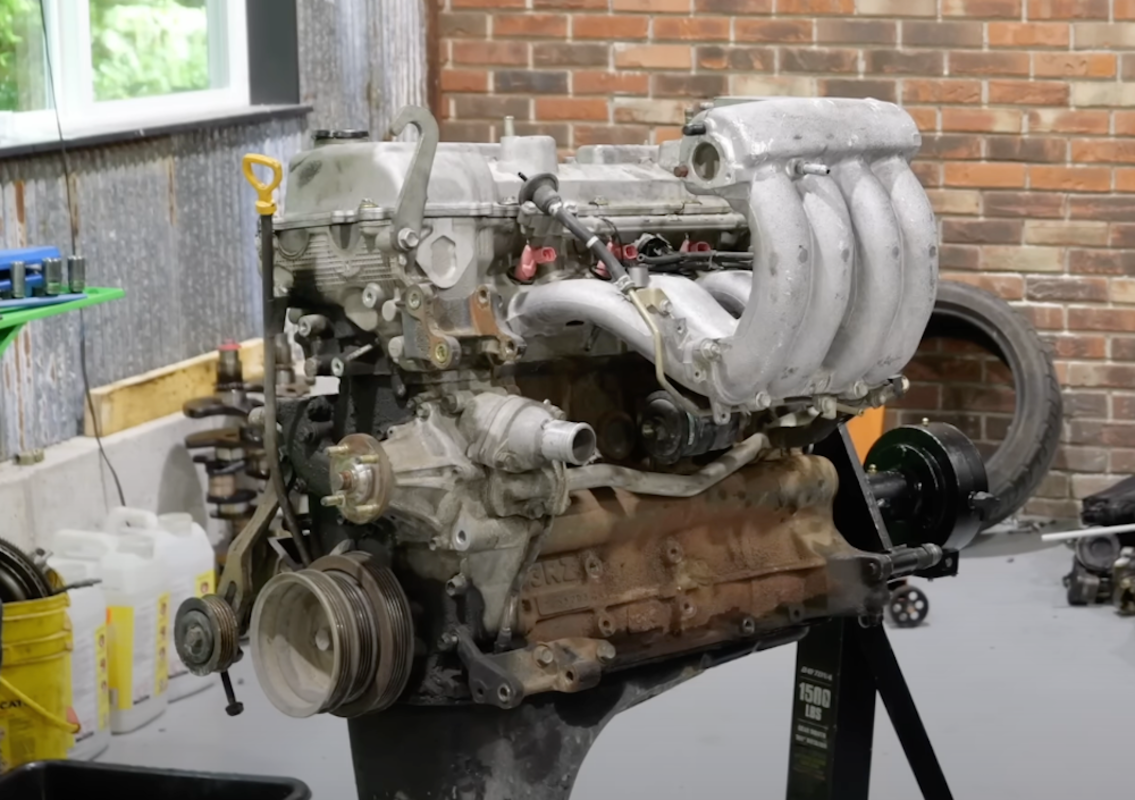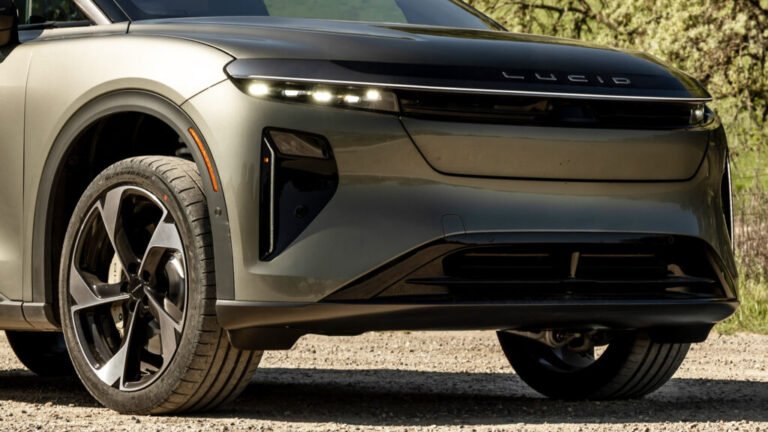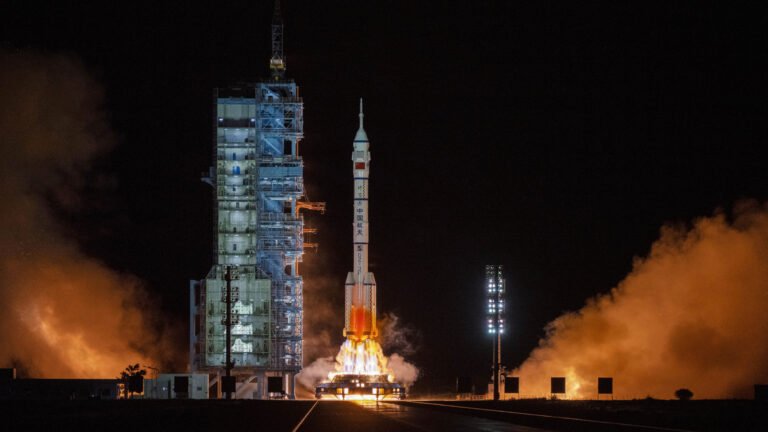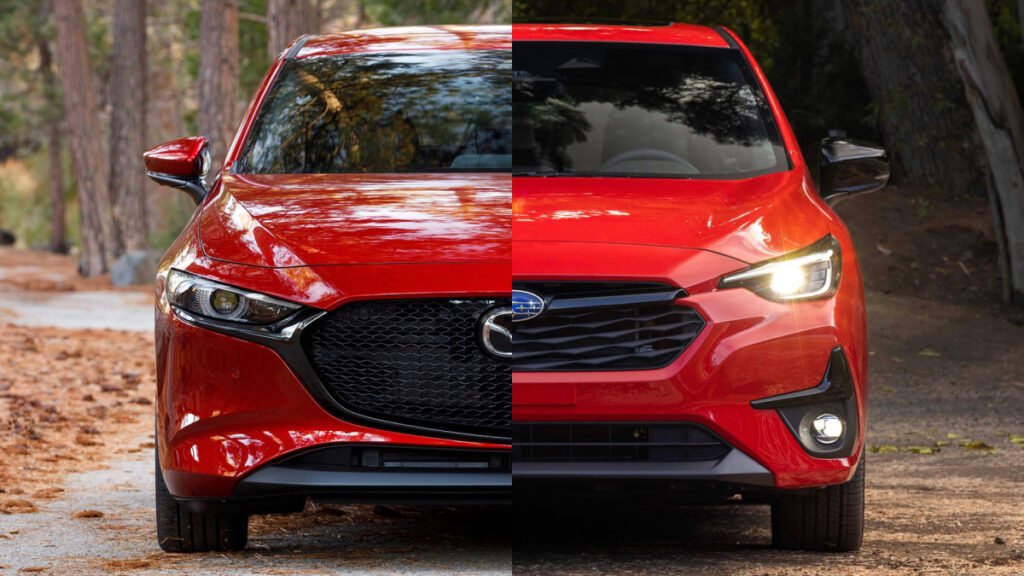
Japanese hatchbacks are still alive and kicking in America
The budget hatchback segment has been decimated over the last five years or so, with cars like the Mitsubishi Mirage, Honda Fit, and Toyota Yaris all departing this market. If you want an affordable hatch, you’ll need to look at the compact models from a class above. This segment includes the 2026 Mazda 3 and 2026 Subaru Impreza, with pricing having just been released for both.
As we’ll see in this comparison, the Mazda and Subaru are quite different takes on the compact hatchback, each with their own strengths. But which one should you park in the garage?
Related: 2026 Toyota Corolla Vs. Mazda 3: 5 Major Differences
1. Mazda 3’s Engines Outmuscle The Subaru’s

Both hatchbacks have two engine options, and Mazda comfortably takes the lead. The base Subaru Impreza is the Sport, but that name is a misnomer, as it has a 2.0-liter Boxer-four engine making only 152 horsepower and 145 lb-ft of torque. The Mazda 3, which shares its powertrains with the CX-30, counters with a standard 2.5-liter four-pot with 186 hp and 186 lb-ft. The Mazda takes a little over seven seconds to hit 60 mph, but you’ll need over nine seconds to reach that mark in the Subaru, which feels sluggish.
The Impreza RS gets a larger 2.5-liter engine with 180 hp and 178 lb-ft, while the Mazda 3 is available with a turbocharged version of its four-cylinder engine, which produces up to 250 hp and 320 lb-ft with premium gas. A 0-60 time of under six seconds for the Mazda 3 Turbo will see it blitz the Impreza RS in a straight line.
Although the Subaru has a solid chassis, its engines aren’t powerful enough to exploit that. The Mazda 3 not only handles brilliantly for a car in this class, but it’s easily quicker.
2. Subaru Uses A CVT, Mazda Still Offers A Manual

The choice of transmissions also shows that Mazda is more willing to appeal to enthusiastic drivers than Subaru. Both Impreza trims use a continuously variable transmission, known to Subaru aficionados as the Lineartronic. Although this transmission does come with paddle shifters, allowing drivers to flip through eight preset ratios that mimic a conventional automatic, it’s still not as engaging as a manual—or even a well-sorted torque converter automatic.
Most Mazda 3s have a conventional six-speed automatic, which does a good job of shifting gears smoothly when pottering around town, and quickly downshifting when you need an extra burst of performance. All models have a manual shift mode, but only the Turbo Premium Plus gets paddle shifters.
The Mazda 3 S Premium has a six-speed manual gearbox, a rarity not offered at all by the Impreza. Unfortunately, the more powerful turbocharged Mazda 3 is only available with an automatic.
3. Only One Has Standard AWD

Like every other new Subaru besides the Uncharted electric crossover, the Impreza comes with the brand’s symmetrical all-wheel-drive system equipped as standard. So, regardless of whether you get the Sport or RS, the Impreza will be surefooted enough to cope with slippery conditions.
Mazda’s 3 gets front-wheel drive on most trims, and only two of the pricier trims are equipped with all-wheel drive. Going for the standard FWD Mazda 3 can save you money, but the Subaru is much more affordable when both are equipped with AWD, as we’ll see in the pricing section later in this comparison.
4. Subaru Is Better For Rear-Seat Passengers, Mazda Is Classier

A compact hatchback isn’t going to win any records for versatility, and both cars have trunks measuring just over 20 cubic feet. Most small crossovers have more packing space, but you can fold down the rear seats to accommodate larger items.
Rear-seat space is tighter in the Mazda 3 Hatchback, which has just 35.1 inches of legroom (34.3 inches on the passenger side) and up to 37.2 inches of headroom in the second row. The Impreza has 36.5 inches of legroom and up to 38.7 inches of headroom in the back, along with almost two inches more shoulder room. Therefore, the Subaru is a smarter choice if you have growing teens that will often occupy the back seat.
From the driver’s viewpoint, neither car has any space issues, but the Mazda shines with its plush materials and tactile controls. Interior design has never been Subaru’s forté, and even though its 11.6-inch center display is larger than the Mazda’s, the overall look is more haphazard and less premium.
Mazda also offers classier leatherette and leather options, while the Subaru goes for sporty but less luxurious cloth on both Impreza trims.
5. Mazda Is Cheaper And Has More Trims

The 2026 Mazda 3 Hatchback starts at $25,550 for the 2.5 S with FWD. From there, the lineup expands to the 2.5 S Select Sport at $26,740 and the 2.5 S Preferred at $28,440. The first AWD model is the 2.5 S Carbon Edition, which costs $31,450, while the manual 2.5 S Premium reverts to FWD and goes for $31,360. The range-topping 2.5 Turbo Premium Plus has AWD but costs $37,890.
The 2026 Subaru Impreza has much less choice, with only two trims, as the 2025 base trim is gone for 2026. The Sport costs $26,595 and the RS costs $29,495.
If you’re on a budget and must have AWD, the Impreza Sport costs $4,855 less than the cheapest Mazda 3 with AWD. However, the Mazda range is more versatile, as you can get a more affordable FWD model or a luxurious, powerful turbo if you’re willing to spend almost $38k.
Related: Subaru Hikes Impreza Prices for 2026—Should You Wait or Buy The 2025 Instead?
Final Thoughts

The Subaru Impreza comes across as an unpretentious hatchback for anyone who doesn’t need the extra ride height of a Crosstrek. It gets AWD as standard, many safety features, and has a good ride/handling balance.
In the Mazda 3, we find a premium experience that lifts it above its key rivals. It has fashionable styling, a potent turbo engine option, an available manual, and a fantastic interior.
With more trims and two transmission choices, the Mazda has a more diverse lineup. It’s a lot quicker than the Subaru and looks much smarter inside, while also offering AWD as an option. With the base Impreza gone, you can also pick up a base Mazda 3 for less. The Subaru’s main advantages are AWD at a lower price and a more accommodating back seat.
Overall, the Mazda wins this battle of the Japanese hatchbacks.
